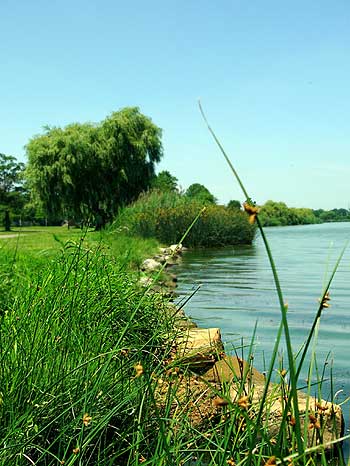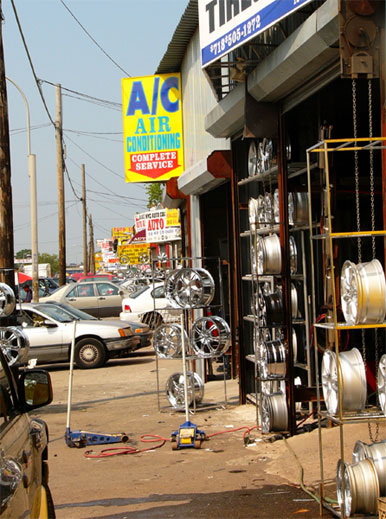Urban habitat; Olympian hopeful
A tale of two venues
The southern shore of Meadow Lake is quiet on this afternoon in July. The baseball field is empty. A family of six sits at a picnic table in the shadow of the Jewel Avenue Bridge, an arterial road that cuts between Meadow and Willow Lakes in Flushing Meadows Corona Park in Queens, NY. A few bikers and inline skaters wind their ways down paths, but the heat wave that has recently immersed the city has halted most outdoor activities. The occasional breeze off the lakes briefly stirs the heavy moist air. This grassy patch scarcely registers as anything more than roadside greenery to drivers exiting the Grand Central Parkway. If New York City's Olympic bid for the 2012 summer games had been accepted, this section of the park would have vanished underwater, along with the wetlands that encircle Willow Lake, to make room for the rowing and kayaking venues.
This grassy patch scarcely registers as anything more than roadside greenery to drivers exiting the Grand Central Parkway. If New York City's Olympic bid for the 2012 summer games had been accepted, this section of the park would have vanished underwater, along with the wetlands that encircle Willow Lake, to make room for the rowing and kayaking venues."It would have meant radical changes for the park," says Patricia Dolan, President of the Kew Garden Hills Civic Association, a neighborhood that borders the park. "To start with, Willow Lake is protected habitat. And it would have been at great expense to taxpayers to have to rebuild the Jewel Avenue Bridge.
The Olympic plan called for two lakes in the shape of a crooked "11." The channel that connects the lakes now was to be filled with whitewater rapids. Kayakers would have carved their way to the finish line steps from the picnicking family. For conservationists, the plan had but one redeeming quality: a clean Meadow Lake.
"They were going to dredge the lake,” says Dolan. "We hope the city still does it, but they've been promising that for years."

In the 1930s, parks commissioner Robert Moses began transforming Flushing Meadows Corona Park from a dumping ground into the second largest of New York City’s parks. He also diverted Flushing Creek to form two freshwater lakes and brought the first of two World's Fairs the park would host.
The commotion of the park's north side, where Shea Stadium, the U.S. Tennis Center and the Queens Museum of Art are situated, is contrasted sharply by the sublimity of Willow Lake in the south, which is often closed to the public. Even though it barely fits in between the expressways on either side, Meadow Lake is a prime destination for Queens’ residents. School buses lined up outside the Boathouse on the eastern shore bring scores of schoolchildren running around in life vests waiting to paddle out onto the lake. The picturesque western shore is home to a shore restoration project by the group New Yorkers For Parks. If the many visitors and varied recreational uses of Meadow Lake aren't enough reasons to confront its pollution, the renewed hope of an Olympics in 2016 might be.
By Gregory Yanick - New York
Greener Magazine Staff Writer
View more site photos with this article



7:14 AM









<< Home